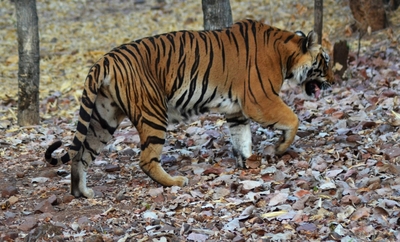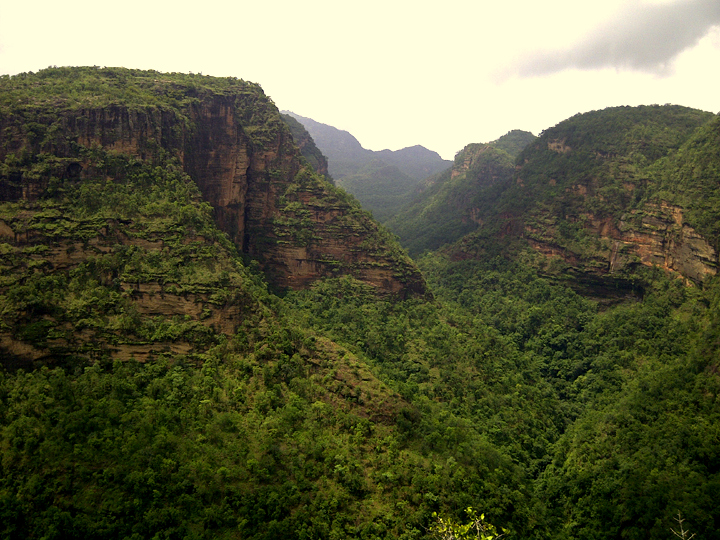THE GLORY THAT
IS
CENTRAL INDIAN
HIGHLANDS
(SATPURA-MAIKAL
LANDSCAPE)
Central
India is considered by many as the heart of India’s wildlife. It is
home to some of India’s largest forest tracts, rich wildlife as
well as a myriad of indigenous people who have been living in the
forests here since time immemorial.
Located to
the south of Vindhya hill range, the region includes the states of
Madhya Pradesh, Chhattisgarh, parts of eastern Maharashtra as well
as some parts of northern Andhra Pradesh. The forests here are
categorized as Tropical and Subtropical Dry Broadleaf Forests under
the Indo-Malayan Realm. Due to the availability of plenty of
minerals and increased efforts to exploit them, the region might
see more serious conflicts of ‘Development’ versus locals and
wildlife in future.
Central Indian Satpura
Maikal Landscape (SML) is the region surrounding Satpura in west
and Maikal hill ranges in east. It is spread across 14 districts of
Madhya Pradesh, Chhatisgarh and Maharashtra, over an area of
1,18,867 sq km 34% or 39,875 sq km of this is under forest cover,
which is roughly the size of the Netherlands!
The
major carnivores here are the tiger (Panthera tigris
tigris), leopard(Panthera pardus) and sloth
bear (Melursus ursinus). This region is famous for
the hard ground barasingha (Cervus duvacelli).The herbivores are
represented by gaur (Bos gaurus), sambar (Cervus
unicolor), cheetal (Axis axis) and barking
deer (Muntiacus muntjac). Other common faunal species are
wild pig (Sus scrofa), jackal (Canis aureus) and
common langur (Presbytis entellus). The area also supports
rich avifauna. The region is a part of the dispersal bridge which
connects the Eastern Himalayas with the Western Ghats (Hora, 1949).
These are some of the most productive habitats for tiger and its
prey species in the Indian subcontinent.
SML
has in it many of India’s best known protected forests. Many of the
PAs here have been synonymous with the tiger. Put together, around
17% of the world’s tigers * are found in the landscape. Two major
corridors in the landscape Kanha – Achanakmar and Kanha – Pench are
currently the focus of WWF-India’s intensive efforts to strengthen
tiger conservation, sustainable livelihood as well as nature
education. Any improvement of the habitats here would not only
benefit the tiger and its prey, but more importantly will directly
help the millions of humans who depend on these forests as a water
as well as for non-timber forest produce (NTFP) and traditional
medicines among others


